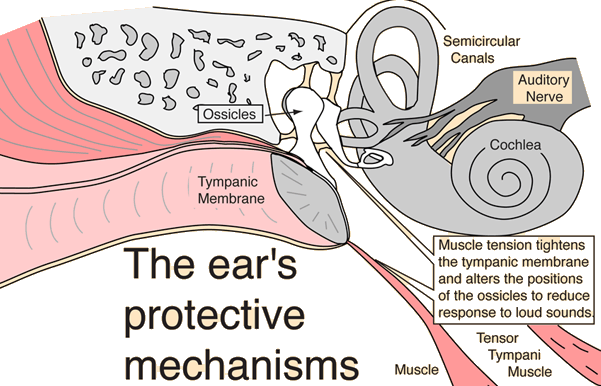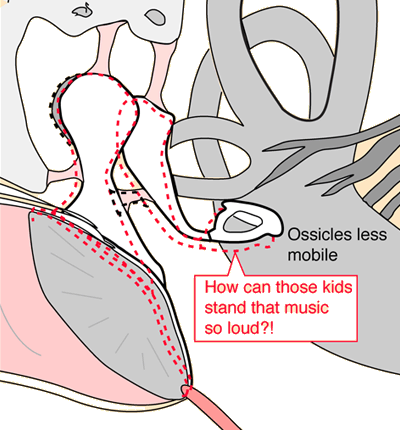
In response to sustained loud sounds, muscle tension tightens the tympanic membrane and, acting through the tendon connecting the hammer and anvil, repositions the ossicles to pull the stirrup back, lessening the transfer of force to the oval window of the inner ear. This contributes to the ear's wide dynamic range.
The stapedius muscle and the tensor tympani muscle act in response to loud sounds.(DeBonis & Donohue)
| More detail |
Hearing concepts
Reference
Stevens & Warshofsky
DeBonis & Donohue

